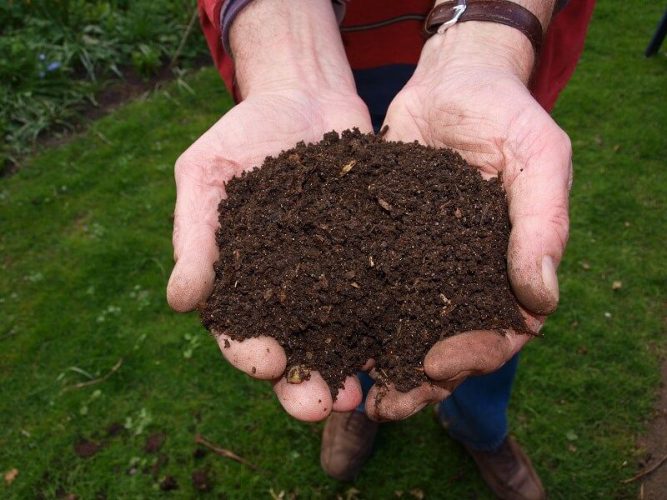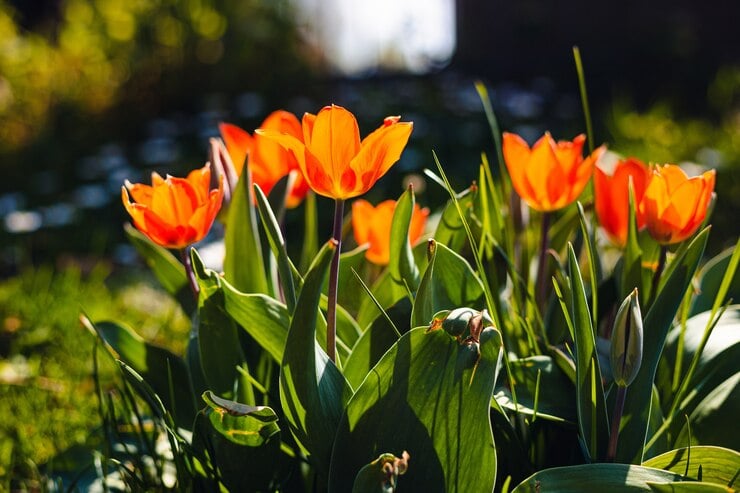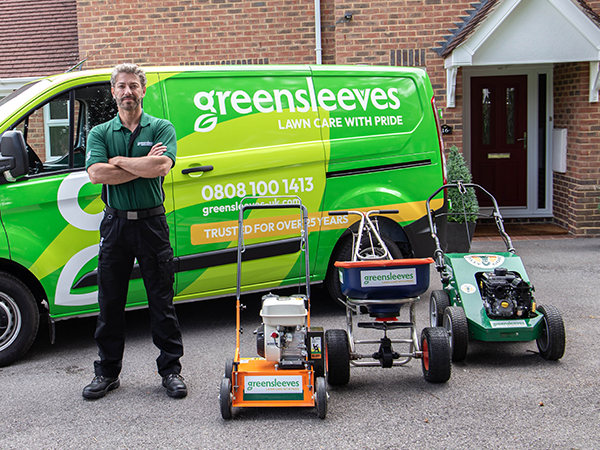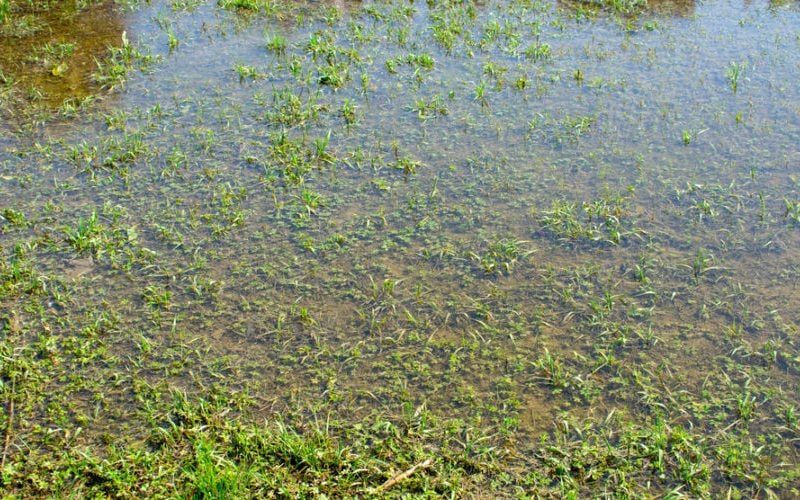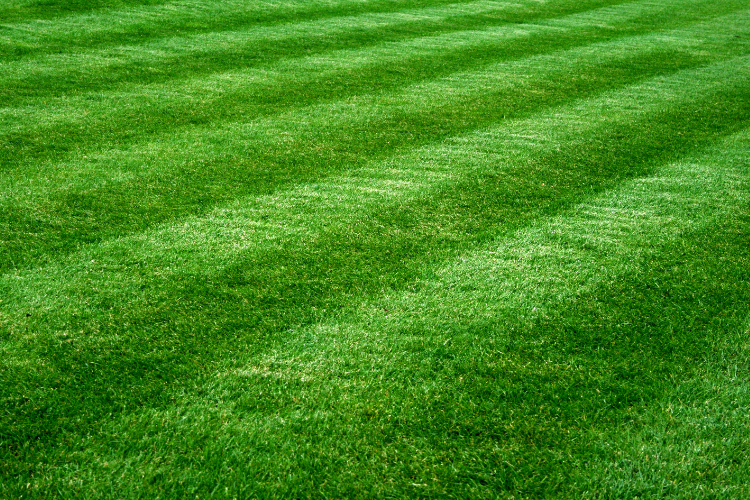Composting is the most environmentally friendly way to deal with garden and kitchen waste and the resulting compost can be used to enrich soils and feed your garden. It’s a brilliant way to improve your environmental footprint and the general health of your garden.
If you have any kind of outside space, then you should be able to compost because compost bins or patches don’t have to be huge. Only the very smallest gardens might struggle for space to start a compost bin.

What is Composting?
Composting is a method of disposing of kitchen waste and garden waste at home. The waste decomposes and breaks down with the help of bacteria to form a nutrient-rich compost that can be used to feed plants in your garden.
Why Compost?
Composting is extremely environmentally friendly, inexpensive and produces rich organic matter that’s very good for your garden.
Disposing of kitchen waste through composting helps you to reduce the amount of waste that goes to the landfill or, in some areas, is incinerated, which produces lots of CO2. It might seem like a small action, but lots of individuals doing small things makes a big difference.
‘Why compost when the waste will go to a landfill and be broken down anyway?’
There are two answers. The first is that many areas incinerate (burn) rubbish rather than adding it to a landfill, which released lots of CO2. The second is that in a landfill, the waste is compacted so oxygen can’t reach the material. Instead of breaking down aerobically, it’s broken down through anaerobic reactions. This produces a gas called methane which is very harmful to the environment. In a compost bin, however, hardly any methane is produced at all, making it much better for the environment.
You also end up with a nutrient-rich compost that’s extremely good for plants in your garden.
What Can Go In The Compost?
Composting is a fantastic way to dispose of garden and kitchen waste, but for the perfect compost mixture you want to get the right ratio of green and brown material.
Green-brown compost
A green-brown compost describes a compost that is made up of two different categories of material: green waste and brown waste. Getting the balance right ensures that the carbon-nitrogen balance is also on point, helping your compost to decompose well without becoming too wet.
Green and brown waste feeds the bacteria differently, and feeds different kinds of bacteria. You should aim for 25-50% green waste and 50-75% brown, woody waste.
Green waste
Green waste is made of soft, often literally green materials. These are nitrogen rich and add more moisture to the compost. They include:
- Kitchen vegetable waste including carrot peelings, coffee, apple cores, banana peels… the list goes on!
- Grass cuttings
- Most weeds
- Deheaded flowers
- Manure (this is one of the best things to add if you can!)
- Tea (tea bags sometimes contain plastic so only compost those you know the bags can break down, or just compost the tea leaves themselves)
- Crushed egg shells
Other kitchen waste like meat, highly fatty foods like peanut butter and dairy products can be composted, but they pose problems because they often smell and can attract pests. It’s usually best to throw these into the normal bin.

Brown Waste
Brown waste is more woody than green and is rich in carbon. It should make up at least 50% of your compost bin. It slows the rate of decomposition but provides essential food for the microbes and helps to prevent compost bins becoming too wet and therefore too compact. It includes:
- Dried leaves
- Wood chips and sawdust
- Plant stems
- Shredded paper or card, including corrugated cardboard boxes (be careful not to use glossy paper or paper with lots of colourful ink)
- Used straw from small pet beds (like rabbit hutches). This might be a mix of green and brown waste if it also contains animal droppings!
- Chopped or shredded pine needles.
- Small amounts of ashes from wood fires
Try to avoid too much of one material in your compost bin. Grass and kitchen waste is best mixed with lots of brown waste to absorb the moisture. This helps to ensure oxygen can reach all the decomposing material.
When Should I Compost?
You can compost all year around.
It’s most effective when the compost bin can stay at a regular temperature, so very hot or cold conditions could affect the speed of composting. However, the core temperature of your compost bin should stay fairly consistent.
With this in mind, when you set up a compost bin, you should try to choose a shady spot in your garden which will help regulate the temperature and prevent the compost from over exposure to sunshine during the summer.
Composting is also suitable for almost any sized garden. If you have a really tiny garden, you could consider worm composting instead of traditional composting as this takes up less space.
How To Compost
Composting is a fairly simple process.
You have to set up a compost bin somewhere in your garden. As mentioned, a shady spot works best.
When you’re looking for a compost bin, it’s best to choose a larger bin (bigger than 1 cubic metre). Composting works with smaller bins, but it’s usually slower. You’ll be able to buy a compost bin from most garden centres or home improvement shops.
Place the compost bin directly onto an earth surface, rather than a hard surface. This allows the compost to drain more effectively and means it has more access to natural microorganisms that help the material to decompose.
You can place your bin on a hard surface, but this might result in some staining of the surface. Consider removing the paving stone on which your bin will sit or making a small raised bed for the bin. If you do have to place it on a hard surface, add a few shovel’s worth of soil into the bottom to introduce the microorganisms required to start the composting process.
Some people also choose to add a wire mesh to the base of their compost bin. This is helpful if you’re worried about vermin becoming a problem. To do this, dig a shallow hole (about an inch deep) that’s the same size as the base of the bin. Place the mesh on top of the hole, making sure the mesh is a little wider than the hole and the base of the bin. Then place the bin on top.
Be sure to mix both green and brown materials, as discussed above, to get the best compost.

Turning The Heap
Turning your compost heap is really important to keep it full of oxygen, essential for the decomposition process. If the heap is too wet it can become compacted, which limits the effectiveness of the decomposition process.
The most effective way to manage a compost heap is to add a lot of material in one go. This helps to keep it oxygenated and breaking down gradually. However, most people can’t do this as we tend to accumulate waste gradually. This means that compost heaps in gardens rarely perform quite as well as municipal compost. And it also means that garden compost heaps need turning.
Turning also helps you to assess the moisture levels of the heap. You need to ensure it stays moist during dry and warm periods, but also that it doesn’t get too wet which will prevent oxygen from getting into the heap.
To turn your compost heap, you could invest in a composting tumblr (or even build your own!), or simply do it manually with a garden fork or shovel. Insert your pitchfork into the compost and literally turn it over, like tossing a salad. Some serious composters have multiple bins and will move the compost from one bin to the next as a way to turn it.
Ideally, you’ll want to turn your compost once a month.
When is the Compost Ready to Use?
Compost can take anywhere between 6 months to 2 years to be ready. Mature compost will be a dark brown colour and crumbly in texture. It should smell earthy, like damp woodland.
Normal garden compost won’t all look like this. You’ll likely have some material that hasn’t decomposed mixed in with compost that is ready to use. You can just remove this from the mature compost and put it back in the pile to continue decomposing.

Compost is a fantastic way to enrich your garden and use waste in an environmentally friendly way! If you want more tips for your garden, then explore the rest of Greensleeves’ blog or discover lawn care services on our website.

